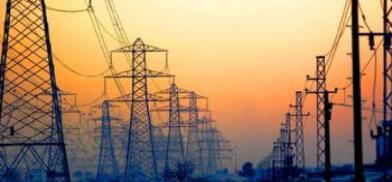India permits Nepal to export 325MW power in its energy market; major energy cooperation in the offing
Once known as a power-starved country, Nepal became a power surplus state last year during the winter months, with its production capacity touching 2000 MW after the commencement of the Upper Tamakoshi hydropower project (456MW)

In a boost to Nepal’s energy market, India has granted approval to Nepal to export 325 MW of electricity to its energy market, days after the two countries agreed to enhance energy cooperation during Prime Minister Sher Bahadur Deuba's visit. Nepal last year became a net energy surplus country, with around 500MW in surplus electricity in the winter months.
Nepal’s Ministry of Energy, Water Resources, and Irrigation has on Wednesday confirmed that India’s Central Electricity Authority approved has granted approval for the sale, reported The Kathmandu Post.
Significantly, energy cooperation, especially the electricity trade, was one of many important issues discussed between the two countries during the recent trip of Nepal Prime Minister Sher Bahadur Deuba. The two countries agreed to enhance energy cooperation under the multilateral BBIN (Bhutan, Bangladesh, India, and Nepal) framework.
The approval is significant as it marks a major jump in the scale of Nepal’s electricity sale to India.
Once known as a power-starved country, Nepal became a power surplus state last year during the winter months, with its production capacity touching 2000 MW after the commencement of the Upper Tamakoshi hydropower project (456MW). However, the country’s domestic demand remained at 1500 MW, and the country struggled to consume excess energy. [Read More]
In the absence of a generalized agreement and framework, Nepal managed to export just 39MW of electricity to India. Most of its surplus energy was wasted last year. Despite being a net energy surplus country, Nepal still imports electricity from India to supply to some regions which remain off the national grid.
Furthermore, by 2023, the country’s electricity production is likely to touch 2500 MW. Domestic demand—peak at 1700MW during summer—couldn’t be increased until the entire regions in the country are brought under the national grid.
The country’s aging transmission infrastructure also needs upgradation, with more high-capacity transmission lines. The MCC compact, a $500 million US aid program for the improvement of its transmission lines, had remained stalled for almost five years and was cleared a few weeks back. [Read More]
Another factor that hampered the power trade between Nepal and India is the Chinese investment in Nepal’s power sector. Last year New Delhi had reportedly refused permission to Nepal for exporting electricity from the power plants having Chinese investment/components.
(SAM)
people, who are wishing in favor of blogging.









Post a Comment